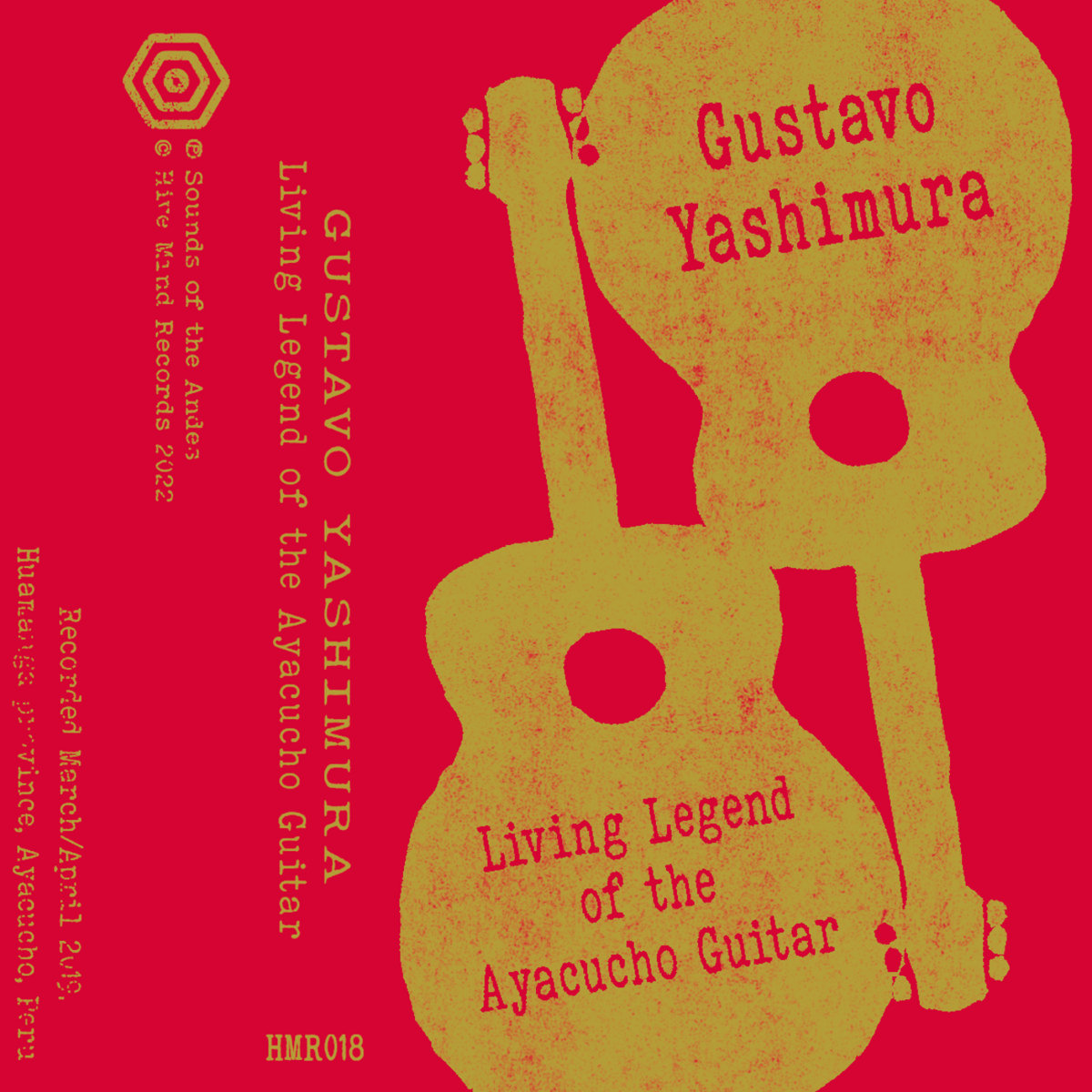Hive Mind Records bringen Anfang Mai mit Unterstützung von Henkel Bellido (Sounds of the Andes) ein Tape mit ausgewählten Stücken des peruanischen Gitarristen Gustavo Yashimura-Arce heraus. Der Musiker entstammt der Ayacucho-Region des Landes, die über eine eigene Musiktradition verfügt. Ausgehend von diesen Wurzeln studierte er Gitarrenspiel an einer Musikschule in Montevideo, Uruguay. Erst nach ein paar Jahren in Japan, woher Teile seiner Familie stammen, wendete er sich wieder der Musik seiner Region zu und studierte die verschiedenen Anden-Stile bei dem in Perum berühmten Gitarristen Don Alberto Juscamaita Gastelú alias Rahtako. Die vorliegenden Stücke können als Resultat dieser erfahrungen verstanden werden. Bei seinen leidenschaftlichen, bisweilen melancholischen Pickings erhält er in einigen Tracks Unterstützung von Luis Sulca Galindo (zweite Gitarre) und Greys Berrocal Huaya (Vocals). Das Album trägt den Titel “Living Legend of the Ayacucho Guitar” und erscheint auf Tape und digital.
“Gustavo Yashimura-Arce comes from humble origins in the Ayacucho region of the Peruvian Andes. He started playing guitar in 1987 and 2 years later he travelled to Montevideo in Uruguay to study music at La Casa de la Guitarra. After spending some years playing classical guitar in Japan, Gustavo returned to Peru in 2004 and began his intense studies of the Andean guitar styles of the Ayacucho region. Later, in 2008 he found the perfect teacher – 80 year old veteran guitarist Don Alberto Juscamaita Gastelú, known locally as Rahtako. Through Don Alberto, Gustavo was able to learn songs and styles from across the Andes, though the main focus remained on the traditional styles of the Ayacucho region. The Ayacucho Province of Peru is mountainous and remote and mainly populated by indigenous people of Quechuan descent, with the main language remaining Quechua, or Runasimi (‘the People’s Language’). The Quechuan people of the Andes remained resistant to Spanish colonisation and fierce in their preservation of their culture but on this album you will hear one of those strange, hybrid artefacts that can arise when cultures meet. The Spanish guitar was taken by the Quechuan people of the Ayacucho region and employed as a new means to convey their traditional music. The melodies you hear are versions of the traditional Huayno melodies usually played on harps, Andean pipes, charango and mandolin.” (Hive Mind)
